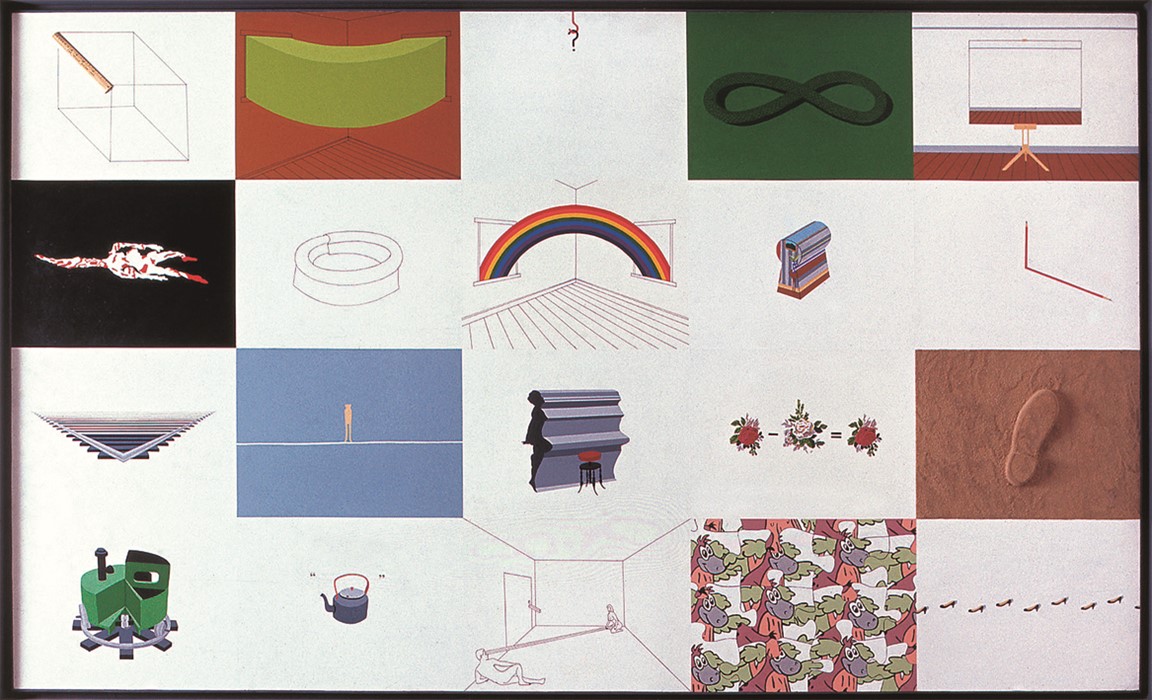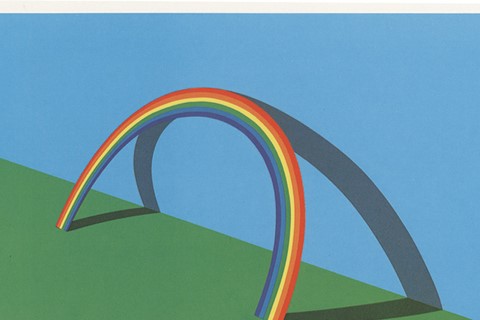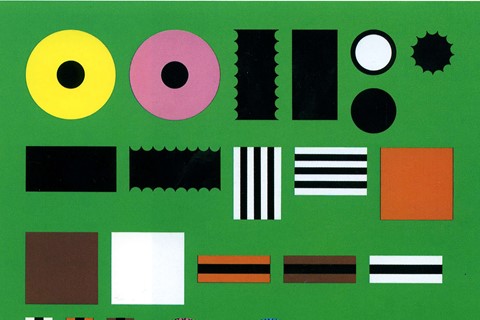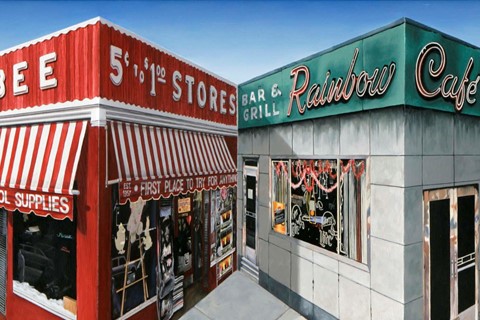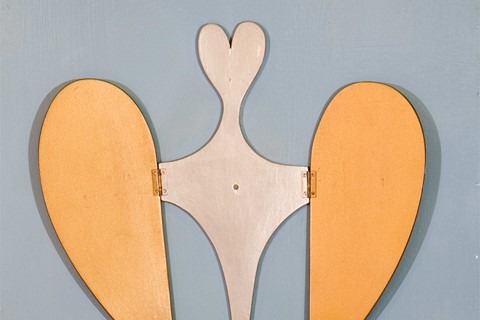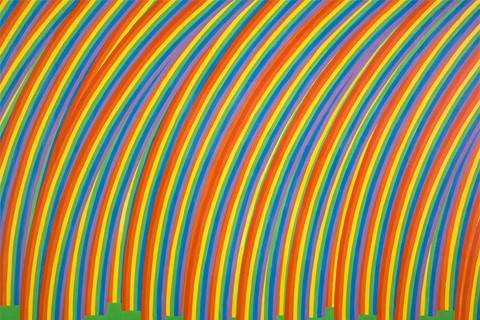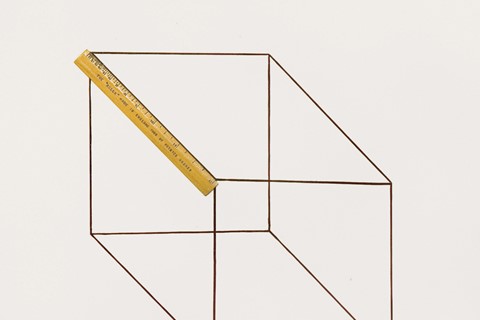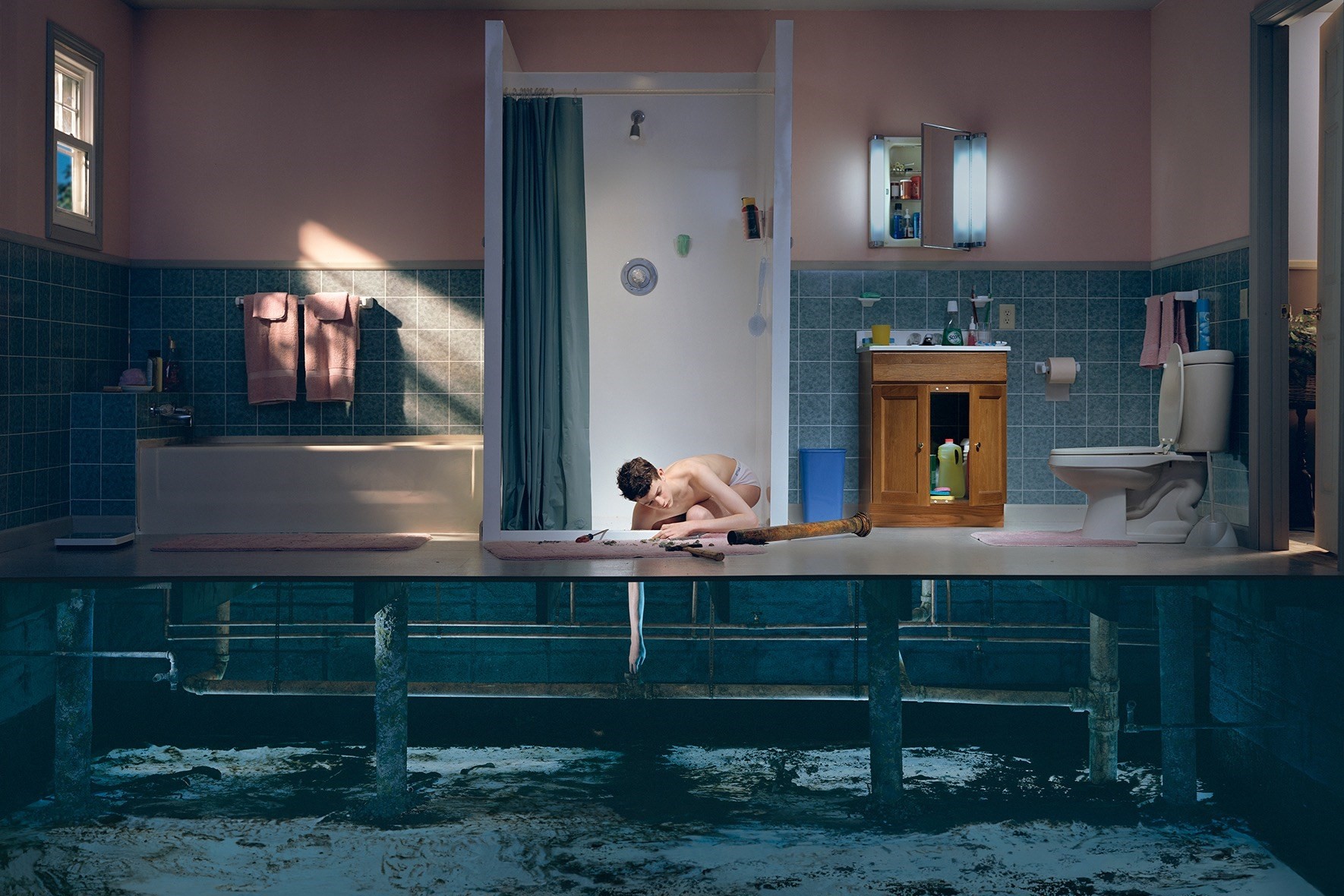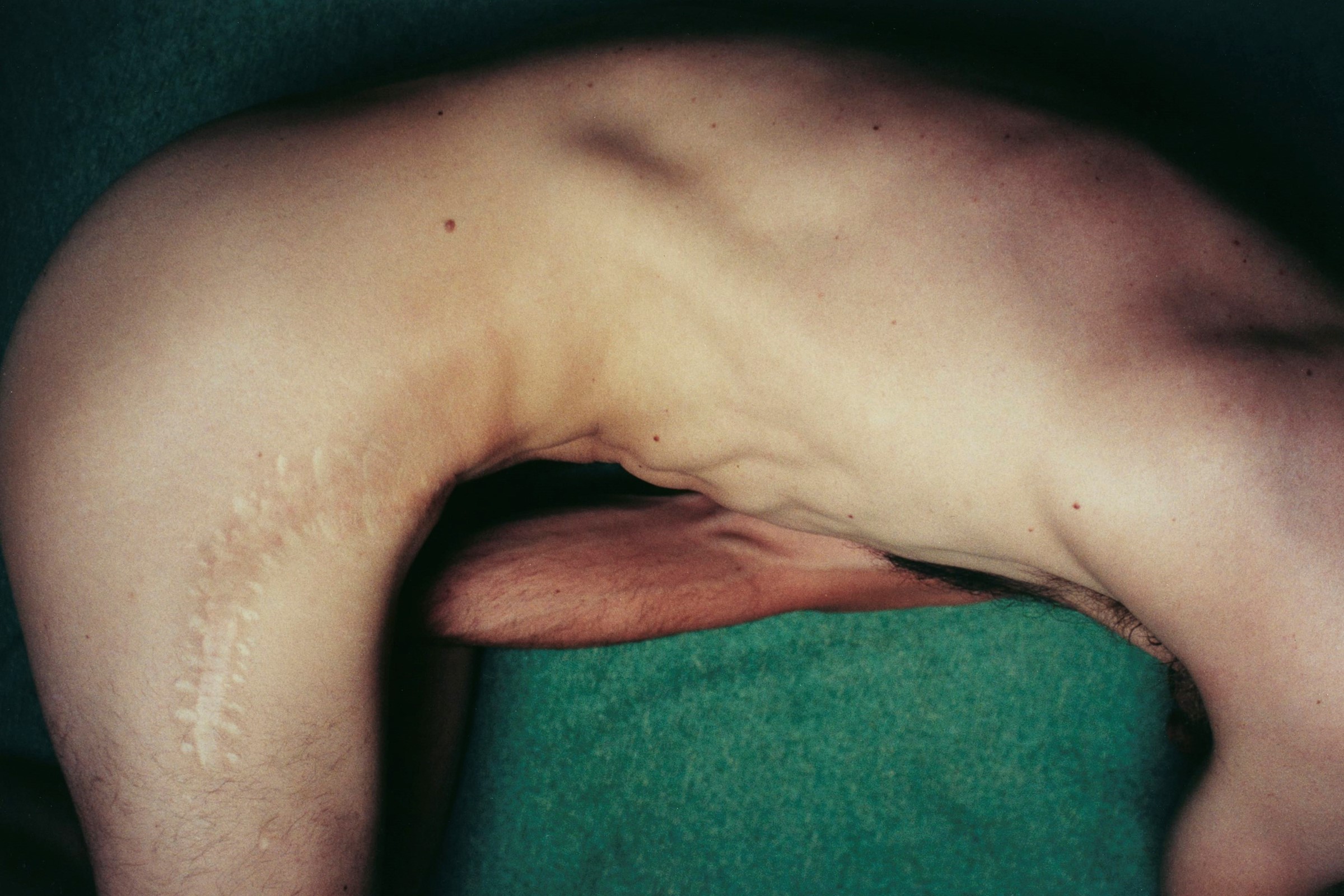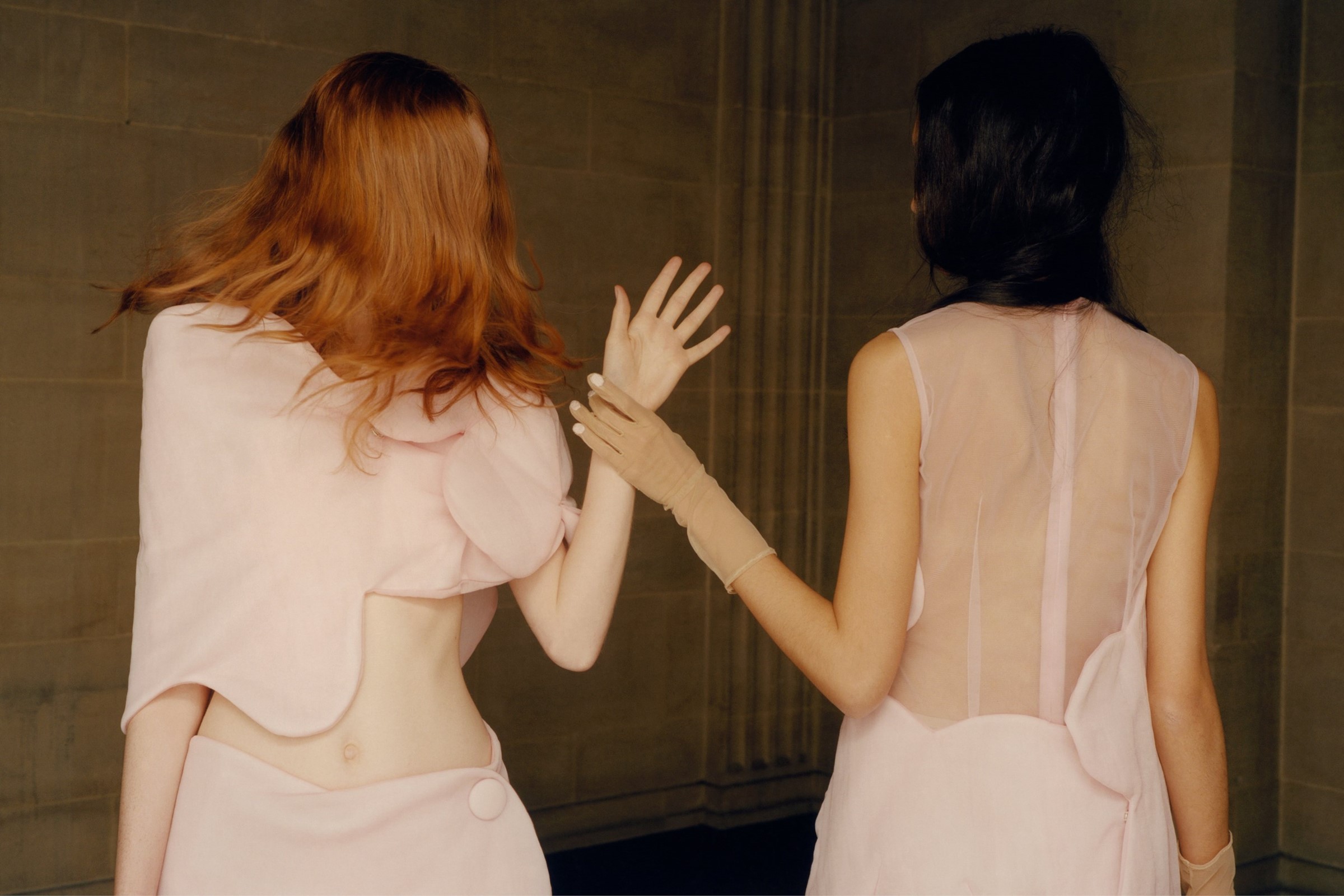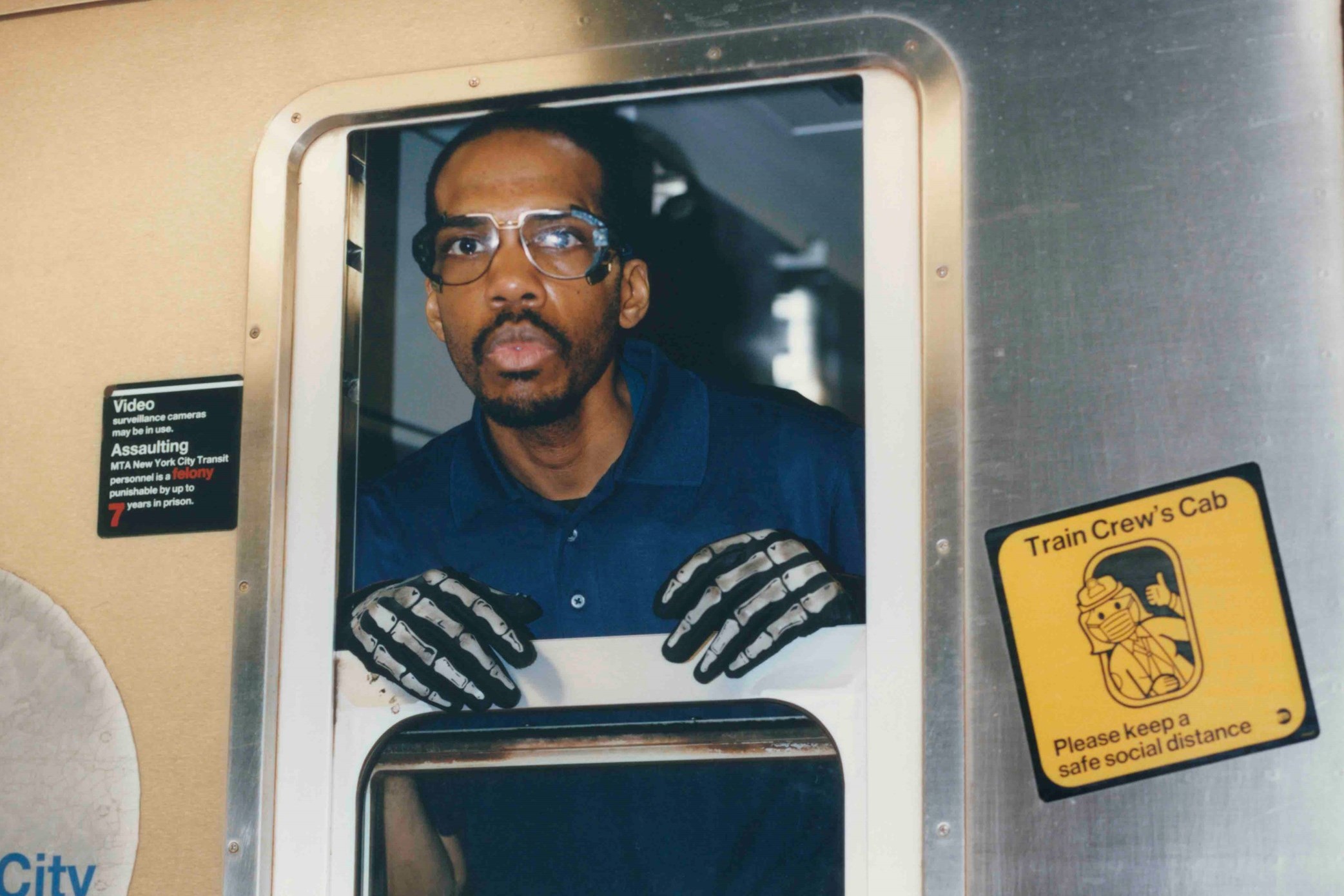British artist Patrick Hughes started his career aged just 21, holding his first and critically acclaimed exhibition at the Portal Gallery, London, 1961. 50 years on, he is one of the UK’s most popular and best selling artists, credited as
British artist Patrick Hughes started his career aged just 21, holding his first and critically acclaimed exhibition at the Portal Gallery, London, 1961. 50 years on, he is one of the UK’s most popular and best selling artists, credited as ‘godfather’ of the UK surrealists and creator of the Reverspective – three-dimensional images which confound viewers by presenting those parts of the picture that seem farthest away at the nearest point, a visual effect of constant movement. Solely represented for over 40 years by Flowers Galleries, this week Flowers, Kingsland Road will present a diverse range of iconic works in Patrick Hughes Fifty Years in Show Business, A Retrospective while a simultaneous exhibition New Works will open at Flowers, Cork Street, from July 14 – September 3. Angela Flowers recalls “When planning my new Gallery in 1969, there was one artist who stood out as my golden choice for the opening exhibition – Patrick Hughes. His paintings, sculpture and graphics were brilliant, exciting, witty and thought provoking. He was a very important artist, and 40 years later my opinion of him and his work has only been more enhanced.”
From Hughes’ famous rainbow series – which inspired Julie Verhoeven’s latest AnOther Exclusive – and reverspectives to early works especially re-made for the exhibition, 50 Years in Show Business will show the artist in all his paradoxical, ironic and ingenious glory. Also a reputable wordsmith – Hughes’ seventh book Paradoxymoron: Foolish Wisdom in Words and Pictures has just been published – exchanged a handwritten Q&A via post during the week running up to his show.
How does it feel to see so many of past your works all together in this major retrospective?
Looking back over 50 years I can see certain themes, visual contradiction and oxymoron and paradox; different images, like footprints and maps and snakes and doors.
How do you think your work and approach to art differs to when you were 21?
When I was 21, I worked quite a bit smaller, and quicker, I was very eager to get on to the next work or idea.
How has the art world changed since you first started creating art?
When I started I was a poor boy in the North, now I am a well-off old man in the South, and the art world has changed with me. Although I am an international minnow, I swim in richer waters.
How did you first come up with the idea of your reverspective images and what is it about perspective that you find so intriguing?
I wanted to contradict in 1964, the way perspective worked, so I made it sticking out instead of going in, but then when people look at it, it goes in again. Perspective is a simple but wonderful geometrical system that is very beguiling. Its implication of vanishing points, and therefore infinity, is exciting.
These particular works lie somewhere between art and science raising intriguing questions to do with our brain’s mechanisms and how we process optical illusions – is this what you had initially intended?
I did not initially intend to make something between arts and science, though I had read a good deal in perceptual psychology. I did not think I would be working in it at first. I have begun to understand how the brain works when people look at my things, after twenty years of working on them.
The rainbow features heavily in your work throughout 1970s to mid 80s – why and what is its significance?
The rainbow is a well known phenomenon that I chose to contradict, to make it straight instead of curved, grey instead of coloured, solid instead of translucent, permanent instead of transitory. I think we often make this mistake of taking an event as a thing.
Both your artworks and writings explore paradox – why is paradox important?
Paradox is particularly alive; in a true and good paradox the dog keeps on chasing its tail. I find that experience is paradoxical, the harder we try, the more difficult it is. When you conduct any study thoroughly you come to understand its self-reference and contradiction, which make a paradox.
If people walk away from your art thinking one thing – what do you hope it is?
I would like people to walk away from my work thinking it was alive, that I gave some life to the work, that it remained in your mind like a ticking clock.
What’s your mantra?
Study, read books of all kinds, find things out; something will come of it.
What are you working on at the moment?
I am working on a couple of commissions, putting things in pictures that people want. For myself I am dreaming of new shapes and new images.
If you were to do 75 Years in Show Business in 15 years time what kind of new work would you hope to put on display?
In 15 years I will be even more skilful and resourceful than I am now in my reverspectives.
Patrick Hughes, 50 Years in Show Business, A Retrospective runs at Flowers, 82 Kingsland Road, London and New Works runs at Flowers, 21 Cork Street, London both from July 14 – 3 September.
Text by Lucia Davies
